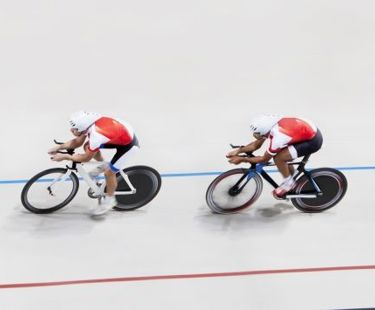In this article we take a brief look at intellectual property in and around cycling. There has been significant uptake in cycling in the last 18 months, both in the UK and worldwide. Global events within this timeframe, in combination with high demand, have put increased strain on manufacturing within the cycling industry. Nevertheless, the wheel of innovation continues to turn, with a seemingly continuous stream of new products coming to market.
There are many innovative sectors in the cycling industry, from the design of bicycles, accessories and components, through to their manufacture. Notable recent developments in this industry include additive manufacturing to create 3D-printed titanium frames; self-adapting damping circuits for bicycle suspension; and improved integration of electric motor and battery technologies to accelerate electric bicycle development.
Intellectual property has been an important driver of product development in the cycling industry. An interesting example of this can be found from the early 1990s, after Specialized Bicycles obtained patent protection for their horst link suspension design, circa 1994. In response to the horst link suspension patents, the industry has seen many alternative rear suspension designs develop for mountain bikes, from improved single pivot designs to the introduction of so-called “faux bar” linkages. Yet even though those early patents relating to the horst link suspension design should have now expired, innovation of rear suspension designs continues, with businesses continuing to pursue IP protection for their suspension designs. Notably, just last year litigation in the US started between mountain bike companies Knolly Bikes Inc. and Intense Cycles, Inc. over alleged infringement of Knolly Bikes’ US patent relating to rear suspension for bicycles.
As could be expected from a sports industry, competition between companies in this industry can be fierce. In the last few years there have been several notable patent disputes. For example, indoor exercise bike company Peloton appear to have been in and out of litigation since around 2018 regarding infringement of their user leader board patents and other rights. In another recent example, a patent dispute is ongoing between British Cycling and Dutch cycling brand Kú Cycle, regarding patent rights relating to aerodynamic improvements to fork legs of track bicycles - an idea utilised on the Team GB Lotus x Hope track bicycle ridden by athletes at the Tokyo 2020 Olympics. In an example from China in 2019, component manufacturer Shimano Inc. lost a court battle that they brought against SENSAH Smart Sports Equipment for alleged infringement of a Shimano patent relating to a speed shifting device. These are just a few examples of recent patent disputes in cycling from around the world.
Whilst there may be a plethora of ongoing patent disputes in this industry, a brief search of public databases for patent rights published in the last 12 months relating to two of the largest bicycle component manufacturers, US-based “SRAM” and Japan-based “Shimano”, appears to suggest that some companies in this industry may try to avoid pursuing patent protection where their competitors have rights in force.
For example, the number of patent rights relating to cycling published for SRAM in western jurisdictions in the last 12 months appears to far exceed the number of patent rights published in eastern jurisdictions. However, the opposite can be said for Shimano, who appear to have had very few European patent rights relating to cycling published in that name in the last 12 months, at least compared to in other jurisdictions. It is not uncommon for businesses to prioritise patent protection in local jurisdictions however, the global reach of these component manufacturers may indicate that these companies would each rather keep to their own turf. Alternatively, the search results may indicate that Shimano feel they have sufficient patent protection in Europe, or that they feel the European market isn’t as commercially important to them. However, 12 months may be a relatively short time in comparison to an innovation cycle period of the above-identified component manufacturers.
The cycling industry is just one example of a global industry with competition between businesses big and small. However, it can be difficult for businesses in any industry to navigate intellectual property space when bringing new products to market. Our attorneys at Secerna have a wealth of experience in helping our clients monitor and assess patents and other intellectual property rights of their competitors across a range of technical fields. If you would like to discuss monitoring and assessing the intellectual property space surrounding your inventions, then please do not hesitate to contact us at docketing@secerna.co.uk.


